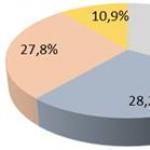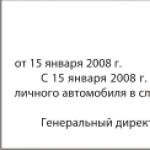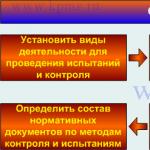
ENVD income. Taxation SP. Common between "simplified" and "imputed"
Any businessman is always interested in the question of how to get more profit and pay less taxes. It is possible to legally reduce the size of taxes by choosing the right taxation system in the implementation of a particular entrepreneurial activity. The state is trying to support small businesses, and therefore the taxes of individual entrepreneurs in 2019 were significantly reduced, which makes it easier for entrepreneurs.
Page content
First, you need to explain what the tax system is and why you need to pay taxes.
The fact is that the state sponsors many budgetary organizations, from kindergartens to social organizations for the payment of benefits. To maintain all of these nonprofits requires financial resources... These funds are obtained precisely by taxing the working population and entrepreneurs.
Thus, the taxation system is the aggregate of all taxes and fees levied in the manner prescribed by law from participants in commercial activities.
Our country's tax system is regulated Tax Code RF.
Subjects of Russia have the right to make some amendments permitted by the main legislation of the Russian Federation. Therefore, when choosing a taxation system, it is useful to familiarize yourself with the Tax legislation of your region.
Types of taxation for individual entrepreneurs in 2019
 There are five tax regimes in Russia that can be applied. An entrepreneur can choose the most profitable mode for himself, or use several special modes at once.
There are five tax regimes in Russia that can be applied. An entrepreneur can choose the most profitable mode for himself, or use several special modes at once.
General tax regime
The opportunity to go on tax holidays is given to newly registered individual entrepreneurs or individual entrepreneurs who switch to the simplified tax system from another regime. The main areas of activity that allow you to go on tax holidays are production, social, scientific and the sphere of providing personal services.
Previously, regional authorities had the right to reduce the rate on “income minus expenses” from 15% to 5% at their discretion.
Now the constituent entities of the Russian Federation have received the right to reduce the tax rate on "income" from 6% to 1% at their own discretion.
In order not to lose the opportunity to conduct business under a simplified taxation regime, the annual income must be no more than 79.740 million rubles (in 2015, the limit was 68.820 million rubles per year).
In addition, in order to be eligible to work under the simplified tax system in 2019, the amount of income for 9 months in 2019 should not exceed 59.805 million rubles.
Since 2019, organizations that have representative offices in other regions have the right to operate under a simplified tax regime. This innovation does not apply to organizations operating in other regions of the Russian Federation.
From April 10, 2019, the new one will be applied. Changes in the form are mainly related to the ability to set different tax rates. It will take into account the possibility of applying a 0% rate, as well as in each reporting period The taxpayer himself will indicate the tax rate on the basis of "income" in the form (previously, the number 6 was entered in the field).
Since 2019, an individual entrepreneur is allowed to exclude VAT on income in his reports. Also, VAT is not included in expenses when calculating taxes. Previously, the amount of VAT was indicated in the invoice and was obligatory to be paid to the budget, plus the same amount was included in the amount of income and taxed at the appropriate rate. Thus, since 2019, double taxation of VAT has been eliminated.
Unified tax on imputed income (UTII)
When working under the regime, an individual entrepreneur pays a single flat tax, which is established by the state for certain types of activities. In fact, under this regime, the amount of tax does not depend on the amount of income. Consequently, this regime is beneficial to those entrepreneurs who, in reality, have rather large incomes.
Tax rate with UTII - 15%. The tax is calculated using a deflator coefficient that changes every year.
For example, let's say the type of activity that you conduct has a flat tax of 120,000 rubles. Your real income was 6 million rubles. If you were on the simplified taxation system and paid the income minus expenses tax at the rate of 15%, then the amount payable would be much higher, that is, 900,000 rubles.
Reporting for UTII is not complicated, it is submitted once a quarter.
SP on UTII has the right to refuse to use and open. The number of employees should not exceed 100 people.
This article talks about typical solutions legal issues but each case is different. If you want to know how to solve exactly your problem - contact our consultant absolutely FREE OF CHARGE!
Thus, this taxation regime is advantageous to apply when the income is really high, since the tax amount is fixed and does not depend on the profit received.
Changes in UTII in 2019.
- Reducing the tax rate in the constituent entities of the Russian Federation.
Regional authorities were able to reduce the UTII tax rate from 15% to 7.5% at their discretion.
- Changed for the calculation of UTII.
The unified tax on imputed income is calculated using the deflator coefficients K1 and K2. In 2019, the K1 coefficient is 1.798 and is common for the entire Russian Federation(originally planned coefficient of 2.083, but the authorities decided to leave it the same). Regions have the right to set the K2 coefficient at their own discretion.
- New form UTII declaration.
In 2019, will apply new form UTII declaration. The changes are related to the possibility of reducing the tax rate from 15% to 7.5%.
Unified Agricultural Tax (ESHN)
Individual entrepreneurs operating in the field Agriculture, that is, they produce, process and sell agricultural products, they can apply the UAT regime. Fisheries organizations are also entitled to apply the Unified Agricultural Taxation.

Unified agricultural tax rate is 6% of income minus expenses.
The tax is paid twice a year, and reporting is carried out according to a more simplified scheme and is submitted once a year at the end of the tax period.
One of the conditions for the possibility of using the unified agricultural tax is that income from agricultural activities must be at least 70% of total income.
Changes to the Unified Agricultural Taxation in 2019.
- VAT will not affect the calculation of taxes.
Since 2019, when reporting an individual entrepreneur, it is allowed to exclude VAT in income. Also, VAT is not included in expenses when calculating the unified agricultural tax. Previously, the amount of VAT was indicated on the invoice and was obligatory to be paid to the budget, plus the same amount was included in the amount of income and was taxed at 6%. Thus, since 2019, double taxation of VAT has been eliminated.
Patent taxation system
The patent taxation system can only be applied to the limited, which is established by law.
The essence of this regime is that an individual entrepreneur buys a patent for a certain period (from a month to a year) and is exempt from paying any taxes and tax returns. The only condition is to pay for the patent on time. The cost of the patent is calculated regional authorities based on the potential profit that can be obtained from conducting a certain type of activity.
Of course, with this taxation regime, there are restrictions: the number of employees is no more than 15 people, maximum amount profit per year is set by local authorities. The use of KKT is not necessary, but you need to keep a ledger of income and expenses. To be able to work in other regions, you need to buy separate patents.
Changes in the patent taxation system in 2019.
- Tax holidays for up to 2 years.
For those who register as an individual entrepreneur for the first time and wish to carry out entrepreneurial activities under the patent taxation system, or for individual entrepreneurs who decide to switch to this regime, the state has provided an opportunity to go on tax holidays for up to 2 years. As with the simplified tax system, the list of activities and the timing of tax holidays are set by the regional authorities at their discretion.
- The list of activities for the application of the patent has been expanded.
Since 2019, the list of types of entrepreneurial activities has been expanded, in the implementation of which it is possible to apply patent system... The list was replenished with 16 types of entrepreneurial activity. New items start at item 48.
- The deflator coefficient has been changed.
The deflator coefficient used for calculating taxes on PSN is 1.329 in 2019 (in 2015 the coefficient was 1.147).
- New application form for the transition to PSN.
From 2019, a new application form for the transition to the patent taxation system will be established.
General changes in the taxation system for individual entrepreneurs in 2019

Thus, in 2019, individual entrepreneurs can carry out their activities under one of five tax regimes: Unified agricultural tax, PSN. Each taxation system has its pros and cons, and the choice must be approached carefully so as not to pay extra taxes later. In 2019, the state introduced changes to tax system, mainly related to the reduction of tax rates and the provision of tax holidays in order to support small businesses. Along with this, serious changes have been introduced in terms of penalties for failure to provide information regarding hired employees. In particular, for better control, a new reporting form 6-NDFL has been introduced, which must be submitted on a monthly basis, and significant amounts of fines have been established for delays or evasion of providing relevant information. A novice individual entrepreneur should carefully study the possibilities of each taxation regime, taking into account innovations and make the right choice.
You will need
- - application for registration of UTII-1 or UTII-2;
- - declaration for UTII;
- - accounting of physical indicators for UTII.
Instructions
Previously, the use of UTII was mandatory. An entrepreneur who fell under this tax regime was obliged to register within five days after the start of activities. Otherwise, he was threatened with a fine. Now entrepreneurs have the freedom to choose whether to apply the STS (OSNO) or UTII.
In order to start applying UTII, you need to write a statement in which to notify the tax office about it. The application is submitted in a strictly established form, for individual entrepreneurs it is UTII-2, for organizations - UTII-1. It must be transferred to the tax office at the place of registration of the individual entrepreneur and LLC or at the place of business. The start date for using UTII will be the date specified in the taxpayer's application. The main thing is that the taxpayer has time to register for UTII within 5 days after the start of such activities. According to the law, taxpayers with more than 100 people, as well as companies with at least 25% participation in other organizations, cannot switch to imputation.
The tax rate for UTII is set at 15%. At the same time, the taxable base does not depend on real income, but on physical indicators: the number of employees, seats, Vehicle, area of premises, etc. When calculating the tax, the actual number of days in which the company (IP) conducted its activities is taken into account. UTII taxes are paid at the end of each quarter by the 25th day of the month following the quarter.
To calculate the UTII tax for a month, the basic profitability (it is fixed by law for each type of activity) must be multiplied by the value of the physical indicator and by the coefficients K1 (in 2014 it is 1.672) and K2 (in each region it has its own). Then you need to divide the resulting number by the number of calendar days of the month and multiply by the number of days when the company conducted the imputed activity.
Payers of UTII are exempt from VAT, income tax or personal income tax, property tax... It is worth considering that it is impossible to take into account the costs incurred on UTII.
Imputed taxes can be reduced by the taxes paid insurance premiums in funds for individual entrepreneurs and employees. At the same time, individual entrepreneurs with employees and LLC can reduce the tax with restrictions up to 50%. There are no restrictions for individual entrepreneurs without employees; they reduce the tax to 100%.
Accounting and tax reporting with UTII are minimized. Entrepreneurs have enough at the end of the quarter for UTII (until the 20th of the month following the end of the quarter). They do not need to keep records of income and expenses, only in the case of combining several tax regimes.
The tax authorities establish special control for taking into account physical indicators on UTII. If the number of employees acts in this capacity, then it is necessary to keep all personnel documents and time tracking. For retail, the physical indicator is the retail space, so the company must have a lease agreement indicating the area of the store.
IE and LLC on UTII, which are engaged in retail, can work without cash register... This is due to the fact that their taxes do not depend on the amount of income received. At the same time, in any case, they are obliged to issue forms to buyers strict accountability(for the provision of services) or sales receipts (for the sale of goods).
Unified tax on imputed income - this is exactly the interpretation of UTII used in official documents - this is a special term for a special tax calculated according to the formula used by representatives of small enterprises and firms, various limited liability companies (LLC) and individual entrepreneurs (IE). Such a tax regime in common parlance is called "imputation", it allows you to significantly simplify the processes of calculating the amount of the required payment.
The application of this tax regime is based on the assumption that the more floor space you have and the more employees you employ, you, as a small business representative, generate more income, and, accordingly, you must pay more tax.
It does not depend on real profits and even if the business is not running, quarterly payments are required. More recently, until 2013 UTII was the only available form of taxation for individual entrepreneurs and LLCs. Now businessmen can choose this type of taxation from several.
Who can use UTII
A complete list of such types of activities of entrepreneurs that can use single tax on imputed income, given in the Tax Code of the Russian Federation in Art. 346.29. But just the fact that your type of activity is on this list is not enough to use UTII. Decision to apply the system taxation of UTII, accept local authorities power and self-government in each case.
In addition to belonging to the list of activities, there is a need for presence and some economic conditions:
- number of staff for Last year should not exceed 100 people;
- lack of belonging to the "largest taxpayers" - those who bring the greatest profit to local budgets;
- the total area of the sales area must be equal to or less than 150 square meters.
In addition, the firm must be organized by ¾ or more individuals and not be a partnership or trust.

What taxes are used instead of "imputation"
Imputed tax is the type of tax that replaces several types of tax:
- income tax;
- value added tax;
- property tax.
But here you need to remember that these types of taxes can be replaced by "imputation" only for the type of activity that is suitable for UTII, that is, you still have to pay VAT on agency or customs obligations.
Read also: What is seasonal unemployment
Calculation of the UTII amount
UTII = VD * D * M * S, where:
- VD - the product of the footage of the premises, the number of personnel and the basic profitability, the value of which is specified in the department of the Federal Tax Service Inspectorate;
- D - deflator - coefficient set annually by the Ministry of Economic Development;
- M - the coefficient established by the authorities of the municipality is also specified in the IFTS;
- С - the corridor of rates established by the regional authorities.
This formula is used to calculate UTII for one month. Since the tax is paid quarterly, the resulting figure must be multiplied by three.
How to provide a report on UTII
Submission of reports must occur once a quarter, no later than the 25th day of the month that follows the reporting period.
The reporting is submitted in several ways.
- In paper form. The responsible person brings the report to the tax office on his own. The report is submitted in two printed copies, one is given to the inspector, and the second remains at the enterprise with a note of delivery. Alternatively, you can send a report by mail with a description of the attachment.
- Electronic communication channels. This can be done on the website of the Federal Tax Service Inspectorate. If the company has no more than 25 employees, then filing reports can only be done electronically.
If the first option is chosen, then the filing must be carried out either by the head of the company, or by the employee who has a notarized power of attorney.
The declaration form is available on various websites, including the FTS website. In the declaration form, which consists of only four pages, the second and third sections and, of course, the title page are filled in.
The general scheme of the procedure for paying UTII
As already mentioned, the unified imputed income tax is paid no later than the 25th day of the month that comes after the end of the quarter for which the company is accountable. In fact, this means that you must pay for the first quarter no later than 25.04, for the second - no later than 25.06, for the third - no later than 25.10, for the fourth - no later than 25.01.
If the above dates fall on weekends or holidays, then the company must settle no later than the first business day after the specified date. The tax is transferred to the tax authority to which the company is attached.
When paying UTII, it is very important not to miss the deadline for payments. Otherwise, a fine is imposed on the company and a penalty is charged for each day of delay.
Ways to reduce the tax burden
There are several ways to reduce the tax burden.
- Depending on the number of employees. If the individual entrepreneur does not have staff, then the contributions paid in extrabudgetary funds... If there is at least one employee, then the businessman can deduct the amounts paid to the funds for the employees. It will not work to deduct the payment in social insurance for yourself.
- Considering that the M coefficient is set by local authorities and depends on the place of registration of the enterprise, to reduce payments, you can choose a settlement with a minimum coefficient.
- Finally, another way to save money by reducing UTII is to reduce the retail space.
IE is a common type of activity. It allows all citizens to start their own businesses. Only sooner or later every entrepreneur thinks about what is more profitable - "imputation" or "simplified". For individual entrepreneurs, the type of taxation plays an important role. It is advisable to decide on it before registering a business. The right one makes life much easier. So which is better to choose - "imputation" or "simplified"? How are these systems different? All this will be discussed further. In fact, everything is not as difficult as it seems. Especially if the citizen already knows exactly what business to start.
Taxation systems in the Russian Federation
To begin with, it is necessary to understand what are taking place in Russia. How should entrepreneurs pay taxes for their business? There are various options for the development of events.
Today in Russia you can be an individual entrepreneur with:
- ordinary taxation;
- special regime;
- patent.
In practice, the latter option is becoming more and more common. In addition to it, preference is often given to special tax regimes. These include:
- USN ("simplified");
- ESHN;
- UTII ("imputation").
Usually entrepreneurs choose between the first and the last option. What is more profitable - "imputed" or "simplified" for individual entrepreneurs? What are the pros and cons of these tax payment systems?
A single tax on imputed income
To do this, it is important to understand what is provided for by this or that option. For example, "imputed". What it is?

UTII is a tax payment system that provides for the transfer Money in the prescribed sizes depending on the type of activity. It does not depend on costs either. In each region, a different size of UTII is established.
Now it is clear what "imputation" is. We can say that this is a tax payment system that provides for the payment of a certain (fixed) amount to the state treasury.
Simplified taxation system
In practice, very often there are entrepreneurs who choose the simplified tax system. What's this? How does this taxation regime differ from the previous one? What features are recommended to pay attention to?
In fact, everything is simpler than it seems. "Simplified" - what is it? This is what the STS is called. It offers entrepreneurs several options for paying taxes:
- "Income". A citizen must transfer once a year 6% of the profit. Only income is taken into account, expenses are not considered.
- "Income-expenses". The entrepreneur transfers 15% of the profits received for the year. Per tax base the figure obtained after taking into account all costs incurred is taken.
Important: each individual entrepreneur independently chooses which system in the simplified tax system to use for him. This decision is entirely dependent on the activities of the entrepreneur.

Common between "simplified" and "imputed"
What is more profitable - "imputed" or "simplified"? For individual entrepreneurs, the solution to this issue is extremely important. After all, the main profit received after taxes will depend directly on the chosen taxation system.
STS and UTII have common features... These include the following nuances:
- you can switch to both systems at any time at the request of the citizen;
- for application of the simplified tax system or UTII there are some restrictions;
- absent additional payments type of VAT or personal income tax - instead of them there is a single payment;
- when applying "simplified" and "imputed" money will have to be transferred to extra-budgetary funds;
- both systems allow combining several modes;
- payment and transfer of the single tax takes place on a quarterly basis.
Hence it follows that "simplified" and "imputed" are a little similar to each other. But there is also a difference among these taxation systems. The future entrepreneur needs to know about it.
Difference
"Vmenenka" and "simplified" - what's the difference? Some of the nuances are clear from the definition of terms. But not everyone pays attention to them. We have to indicate how exactly the STS differs from UTII.

Application:
- The simplified tax system applies to any type of activity in the Russian Federation.
- UTII is available for specific types of work in a particular locality.
Choosing a tax base:
- The simplified tax system provides for several options for paying taxes - "income" (6%) and "income-expenses" (15%). The size of the payment as a whole depends on the profit of the individual entrepreneur.
- UTII proposes to pay taxes at a fixed rate. Only the choice of activity depends on the entrepreneur.
Impact on the tax base:
- "Simplified" allows you to change the amount of certain payments of the entrepreneur in the reporting period. For example, a complete absence of taxes is allowed.
- "Vmenenka" forces citizens to pay the same taxes all the time. The entrepreneur cannot influence the amount of deductions in any way.
Combination:
- The simplified system has limitations when combining several tax payment regimes.
- UTII is combined with all types of taxation without restrictions and problems.
Perhaps these are all the main differences between the systems mentioned. What other features should an entrepreneur pay attention to before choosing a tax payment option?

Reporting
What is more profitable - "imputed" or "simplified"? Plays an important role for individual entrepreneurs. Therefore, you have to decide which option to choose.
For some, reporting is important. Under the simplified system, the entrepreneur submits the relevant document once a year. And UTII provides for quarterly reporting. Accordingly, taxes are paid either once a year ("simplified"), or every quarter ("imputed"). The SP makes payments every 3 months.
What's better
So what is the best choice? In fact, there are no precise indications regarding the choice of the taxation system in this or that case. Each entrepreneur conducts his own business, and for it you have to make individual calculations. Only after them will it be possible to say what to choose - STS or UTII.
Taxation of individual entrepreneurship has many features. As a rule, if you want to "see what happens", there are no significant expenses and the person plans to work "for himself", preference is given to the simplified tax system with the "income" payment calculation system. This is the most suitable way of doing business for those who don't feel like doing the extra paperwork.

UTII is considered a universal option, but requiring certain expenses and reporting. Therefore, this regime is applied in cases where the entrepreneur is 100% sure of the profitability of the business.
Now it is clear what types of taxation systems are used by entrepreneurs in Russia. It is also clear that it is up to each individual entrepreneur to decide which tax payment option to choose.
- It is necessary to calculate the approximate payments of individual entrepreneurs in the form of taxes, as well as the profitability of the business. It is important to consider the regularity of the income.
- Compare the amounts of taxes under certain regimes. At the same time, it will be necessary to take into account the possibility of minimizing payments under the law.
- Analyze what changes can occur when doing business, compare the risks of going beyond the use of the simplified tax system and UTII.
- Study the changes in the legislation of the Russian Federation regarding special regimes.
All this will help to find out exactly what is more profitable - "imputed" or "simplified" for individual entrepreneurs. In practice, as already mentioned, the simplified tax system is often chosen. All this is due to the lack of constant reports before tax authorities... Often it is this factor (taking into account the calculation of the expected profit) plays a decisive role. Especially if an entrepreneur works without employees, for himself. Individual entrepreneurs' payments to off-budget funds remain unchanged under all taxation regimes. They are listed in fixed sizes, taking into account the minimum wage. Therefore, with UTII and STS, the PFR will have to transfer the same amount of money.

UTII- This is a special tax regime that can be used by representatives of small businesses (LLCs and individual entrepreneurs) employed in certain areas of activity. Vmenenka greatly simplifies the process of calculating the amount of tax and preparing reports for the organization, the process of control over taxpayers for government agencies.
The special regime is based on the assumption that the amount of units of a physical indicator affects the amount of profit of a commercial structure. In other words, the legislator is guided by logic: the more employees, square meters of retail space or vehicles an LLC or individual entrepreneur has, the more revenue he will receive. This means that the amount of tax should increase.
The real income of the commercial structure is not taken into account. The state "imputes" to it a certain figure of the industry's average revenue. It does not matter whether an LLC or an individual entrepreneur conducts actual activities: they still have the obligation to make quarterly budget payments.
Until 2013, imputation was mandatory system for LLCs and individual entrepreneurs of certain areas of activity. UTII in 2016 and 2017 is a voluntary regime, and entrepreneurs have the right to choose between it, OSNO, STS and the patent system.
Who can switch to UTII?
An exhaustive list of activities for which imputation is available is given in the Tax Code of the Russian Federation (Art. 346.29). Having your line of work on this list is not enough. The list is of a recommendatory nature, and the decision to grant the right to use a special regime to a particular type of business is made by the municipal authorities. The list of OKVED can be found in regulations at the city or district level.
According to the Tax Code of the Russian Federation, uniform imputed tax available for the following areas of business:
- providing household services to the population (repairing shoes and clothes, assembling and repairing furniture, dry cleaning, photography studio, maintaining baths and saunas, etc.);
- transportation of passengers and goods;
- veterinary activities;
- public catering;
- provision of places of temporary residence;
- placement of advertising materials;
- transportation individuals and cargo.
Belonging to a certain field of activity is not the only condition for the transition to imputed tax for an individual entrepreneur or LLC. This mode was originally conceived as a system for small businesses. Therefore, there are economic criteria that a commercial structure must comply with:
- the average number of employees over the past 12 months is no more than 100 people;
- retail space - no more than 150 sq. m. (this figure includes only the area of the hall used for the demonstration of goods, the size of utility and storage facilities is not taken into account);
- residual value of fixed assets - no more than 150 million rubles;
- not belonging to the group "largest taxpayers" (it includes organizations that bring highest income local budget, based on the official decision of the Federal Tax Service Inspectorate).
Imputed tax implies some legal requirements for potential payers. It is not allowed to organize a company as a simple partnership or a structure employed trust management property. The share of legal entities in the capital of an LLC should not exceed ¼.
What taxes does imputation replace?
An important feature of UTII is that this special regime involves the replacement of several taxes with one. This greatly simplifies the procedure for calculating the amounts of mandatory transfers for the taxpayer.
A single tax on imputed income exempts an entrepreneur or LLC from paying:
- property tax;
- income tax;
It is important to understand that exemption refers only to the direction of work that is subject to "imputation". In other words, property and profits associated with "imputed" activities are not taxed. LLC and individual entrepreneur do not lose the obligation to pay VAT on customs and agency obligations.
The "claimant" remains the obligation to transfer insurance premiums and personal income tax for their employees and for themselves. Failure to comply will be a violation of the law and will result in fines and penalties.
To calculate the amount of the budget payment, the following formula is used:
Tax = Imputed income * K1 * K2 * Rate.
Explanation of designations:
- Imputed income is the product of a physical indicator (number of employees, parking lots, floor space, etc.) and base profitability. The meaning of the latter can be clarified in the Tax Code of the Russian Federation or in "your" branch of the IFTS.
- К1 - deflator - coefficient set by the Ministry of Economic Development on an annual basis. It includes the rate of growth of industrial prices for goods. In 2017, this figure is 1.798m.
- K2 - "local" coefficient, which takes into account the specifics of doing business in a particular municipality... It is established by the authorities of the city or district. The value of the indicator will be prompted to you by the tax office.
- The imputed rate in 2017 assumes a change in rates in the corridor from 7.5 to 15%. The exact value of this parameter is determined by the decision of the regional authorities.
The basic profitability is indicated in the Tax Code of the Russian Federation per month. The term for which the tax is transferred is a quarter. To find the quarterly value, you need to multiply the result obtained by the formula by three.
An example of calculating tax on UTII
LLC "Romashka" is engaged in retail sale of non-food products. Trade is carried out through a store with an area of 75 sq. M. Let's collect the data for substitution into the formula:
- the basic profitability for this line of business is RUB 1,800. per square meter;
- physical indicator - the footage of the store, equal to 75 square meters;
- K1 in this year is 1.798;
- K2 - to be specified in the INFN, to which the LLC is assigned, for simplicity of calculations, we will take it equal to 1;
- rate - varies from 7.5 to 15%, let's say that in a particular region it is equal to the maximum value.
We substitute the values into the calculation formula:
Monthly tax = 1 800 * 75 * and 1.798 * 1 * 01.15 = 36 409.5 rubles.
To determine the quarterly tax rate, multiply this number by three:
36 409.5 rubles * 3 = 109 228.5 rubles.
This is a unified tax on imputed income (UTII), which the LLC must transfer to the details of "its" IFTS based on the results of work for the quarter.
The procedure for reporting on imputation
The reporting period for imputation is a quarter. This means that commercial structures that have switched to this regime are obliged to submit a declaration on UTII every three months. This must be done no later than the 20th of the month following the quarter.
The completed form for UTII in 2017 can be submitted to the INFS in two ways:
- Electronic - through operators of electronic document management or on the website of the Federal Tax Service. If no more than 25 employees work in an LLC or individual entrepreneur, then only this method of submitting reports is permissible.
- On paper - an entrepreneur or general director of an LLC brings the declaration to tax office personally. The document should be printed in two copies: one remains in the IFTS, the second is returned to the head with a mark of acceptance. You can send reports by mail, in this case, the proof of its submission is a list of the attachment of the letter and a receipt for sending it.
If the documentation for UTII in 2017 for an individual entrepreneur or LLC brings to tax authority not the manager himself, but another employee of the LLC or individual entrepreneur, a notarized power of attorney must be drawn up for him.
You can download the declaration form on the websites of information and legal systems. It consists of title page and three sections. By general rule filling out the form starts from the second section. It contains all the parameters that are substituted in the tax calculation formula: basic profitability, the number of units of a physical indicator, coefficients K1 and K2, information about the address and direction of activity of an LLC or individual entrepreneur.
The third section of the declaration is the adjustment of the amount of mandatory payment for insurance premiums transferred for employees of an LLC or individual entrepreneur (or the entrepreneur himself, if there are no employees). As a result, the final tax amount is obtained, which is prescribed in the first section.
The title page of the declaration is general information about the organization (name, TIN, KPP, OKTMO), date of filling out the document and signature of the person in charge.
Important! Since 2017 it has been operating new form a declaration that has undergone technical changes from the previous version.
The procedure for paying UTII
Imputed income tax in 2017 is paid no later than the 25th day of the month that follows the reporting period - the quarter.
The dates of the budget payment in 2017 are as follows:
If the specified dates fall on holidays or weekends, then the LLC or individual entrepreneur are obliged to make the payment on the first working day that follows.
Imputed tax is transferred to the IFTS, which is assigned entity or SP. Payment is made on the basis of a receipt, the amount for which is calculated using the above formula.
Violation of the deadlines for the transfer of tax leads to the fact that the LLC or individual entrepreneur is subject to a fine. For each overdue day, a penalty is charged equal to 1/300 of the refinancing rate set by the Central Bank of the Russian Federation.
How to reduce the tax burden on the "snooper"
The imputed tax for individual entrepreneurs in 2017 can be reduced by the amount of insurance premiums. If an individual entrepreneur does not have employees, he has the right to deduct from the amount of the budget payment the entire amount of contributions paid to off-budget funds for himself.
If the individual entrepreneur has hired personnel, then the entrepreneur has the right to deduct from the tax amount the amount of contributions from the payroll transferred to off-budget funds for employees, and fixed payments "for himself." At the same time, the size of UTII should not decrease by more than 50%.
To save on budget transfers, you can use some ingenuity. Since the coefficients K2 differ in settlements, you can choose to conduct business a city or district with its minimum value. Optimization of the physical indicator plays a significant role. Fewer employees or less retail space can mean significant tax savings.
Advantages and disadvantages of "imputation"
UTII is a convenient mode for small businesses, because it has many advantages:
- simplified procedure for conducting accounting and tax accounting for small companies;
- replacement of several taxes with one;
- the use of correction factors (K1 and K2), which reduce the tax base, taking into account external factors and conditions;
- simplicity of quarterly reporting: imputed income tax involves filling out one declaration, consisting of only four sheets;
- the ability to reduce the tax base by the amount of insurance premiums transferred to off-budget funds for employees.
Despite the large number of advantages, imputation has significant disadvantages that must be taken into account when choosing a tax regime:
- The limited range of individual entrepreneurs and LLCs that can apply UTII (this tax is available only for the spheres of activity listed in the Tax Code of the Russian Federation).
- Overestimated values of basic profitability that have no real economic justification. The legislators did not take into account that many individual entrepreneurs who do not have hired workers are engaged in low-profit activities.
- Absence of dependence of the size of the budgetary payment on the profit of an LLC or individual entrepreneur. The imputed taxation system is beneficial for highly profitable areas of work, but is completely inapplicable for low-profit organizations and commercial structures that are suffering losses.
- Limiting the range of potential contractors. If an LLC or individual entrepreneur works with large firms, imputation for it is a path to nowhere. Clients will not cooperate with this structure, because the absence of VAT in the price of goods for an enterprise on OSNO means an increase in the price of the product by 18%.
UTII - optimal choice for LLC and individual entrepreneur with high level income. The tax amount will not change with the growth of revenue, and this is beneficial for the business. If you work "to zero" or suffer losses, "imputation" will not work for you.
If you find an error, please select a piece of text and press Ctrl + Enter.

















